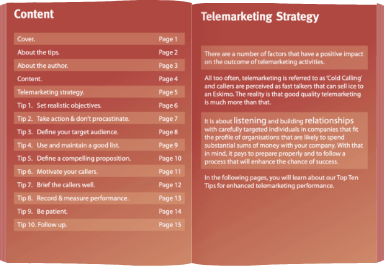Prospective clients often ask us whether we use telemarketing call scripts. In this blog we discuss how to write an excellent call structure not a script. It’s an interesting question though.
We typically provide outsourced telemarketing for businesses that target large blue-chip organizations. Those decision-makers do not respond well to scripted calls that could fall over at first sign of a question or objection. The only chance of success is through an engaged conversation about their challenges and their opportunities. Therefore, a script is not for us. However, a good call structure is something we spend time on and is invaluable to guide the call. Whilst a script isn’t for us, that’s not to say that, in some situations, a formal script is not applicable.
What is the difference between a call structure and a call script?
Certain types of calling suit scripts and some suit call structures. Whilst, we will focus here more on call structures, it is worth noting when and why a call script might be needed.
Typically, a call script is used by less senior callers where perhaps the need for engagement and discussion in the call is less than it would be in other situations. It’s conceivable that the value of sale is lower and each call is likely to be similar in style, structure and length. It is likely to be a fixed patter. Often traditional call centers selling more commoditized products and services may use a script.
A call structure, on the other hand, generally leaves room to flex the conversation to suit the prospect. It will almost certainly include a more two-way exchange of dialogue and provides additional elements that the caller can use to engage and build rapport. It will probably be where there is a higher value of sale.
What Elements Should you Include in an Effective Call Structure?
The following are the components of an effective telemarketing call structure that you should provide to your telemarketer in advance of making the calls.
Background about the Prospects or Market and Campaign Focus.
We provide our telemarketers with supporting information about our clients’ services or products and the marketplace and in particular the challenges in the market. The information also summarizes the focus of the campaign and often includes reminders about who we will be booking the appointments for, how long a meeting will be and how the appointment should be qualified.
It is also important to confirm who the target decision maker is for the campaign. This isn’t always straightforward if the specific job function isn’t available on a list or where there might be multiple decision makers. The caller needs guidance in these instances and we provide a suggestion of questions to ask to establish who is the correct person.
Suggested Opening
Offering a variety of call opening suggestions, based on client input, helps the telemarketer put into their own words what will work for them. Everyone is different and the call intro must feel natural. We role play at the beginning of each campaign. It helps the caller to practice what they will say and ensures that it is natural and focused. It also ensures that they understand the proposition and can adapt accordingly.
Good Questions
We provide a list of suggested open and closed questions to follow the call intro. The telemarketer’s job is to engage a prospect in a conversation. To enable this to flow, open questions help build rapport, extract the desired information and allow the caller to better control the call. In addition and used sparingly, closed questions enable opportunity filtering and prospect qualification.
Objection Handling
Handling objections can be the hardest part of a call and dealing with them in a calm and professional manner is a skill in itself. We work with our clients to document anticipated objections. We then provide a variety of typical responses (and questions) to counter these.
Closure
Within the call structure, we include reminders of our process for booking meetings. A client may have a particular preference as to how a meeting should be confirmed. Whatever the client has requested, we ensure that there are reminders for the telemarketer on the call structure.
In some cases, we may also provide guidance in terms of how to close for the appointment itself. This is important if the caller is less experienced.
Benefits
At the end of the call structure we include an aide memoir of the benefits of the client proposition. The kind of information provided is:
-
-
- Background / context e.g. Is there a change of legislation? Market information etc.
- Why a prospect should see our client and why they should see them now
- What is different about our clients’ services (point of difference)
- Client reference points (to name drop)and testimonials
- What industry awards they have won or memberships of industry bodies
- Specific experience related to the proposition
The more prepared the telemarketer is, the more they can utilise their rapport skills to deliver the outcome that our clients want from the call.
A good call structure ensures consistency of message and continued quality and focused calls. It also delivers better telemarketing results.
If you’d like to find out how GSA Business Development can help Generate Growth for your Business or book one of our new business development and marketing strategy workshops, contact us now on 0845 658 8192 or send us an email.






